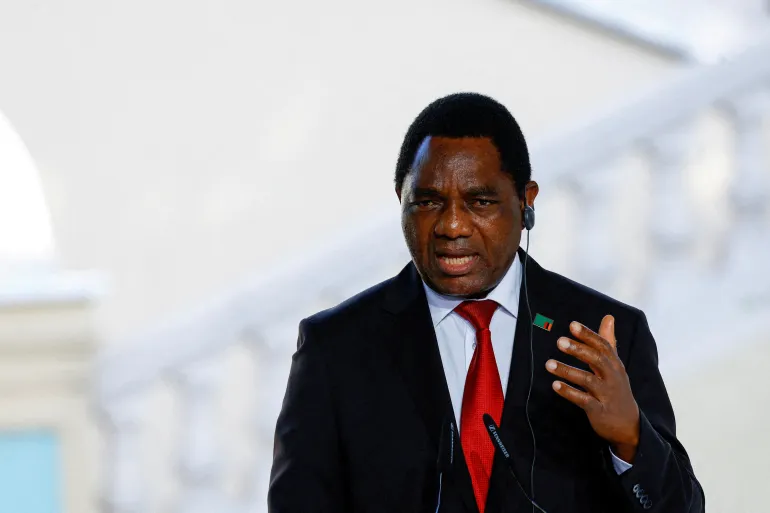New York, 18 April 2024 (TDI): The Zambian drought has been declared a national disaster, with President Hakainde Hichilema maintaining that the lack of rain has heavily impacted the agriculture sector, affecting over one million families.
Because of the influence of El Nino on the 2023-24 rainy season, Zambia has lost one million hectares from 2.2 million planted crops.
Zambian drought
The Zambian drought has occurred as a result of the country going through five weeks without rain, at a time when farmers demand it the most, President Hakainde Hichilema reported from the capital Lusaka.
President Hakainde Hichilema also reported that, “The destruction caused by the prolonged drought spell is immense,” with the country’s 84 out of the 116 districts already been affected by the Zambian drought.
Aggravated by climate change and the El Nino weather phenomena, the crisis poses a threat to the national food security of Zambia, along with its water and food supply, reports President Hakainde Hichilema.
As a result of this, the President Hakainde Hichilema reports that, “In view of these challenge…we hereby declare a prolonged drought as a national disaster.”
In addition to this, the Zambian drought has led to the country needing $900 million this year, where in some parts of the country swathes of crops have been wiped out with economic growth forecasted to be cut in more than half, reports the finance minister Situmbeko Musokotwane.
While the government of Zambia is realigning its 2024 budget, it will nonetheless have to seek added funds from bilateral donors including the International Monetary Fund and the World Bank, to cover a financing deficiency and save lives, according to finance minister Situmbeko Musokotwane.
El Nino phenomena
The Zambian drought including droughts in other parts of southern Africa have impacted millions of people and forced them to face hunger. This is largely caused because of the El Nino weather pattern, not climate change, report scientists.
Joyce Kimutai, of the Imperial College London reports that, “The southern Africa drought appears to be a rarer example of an event fueled primarily by El Nino.”
In a study focusing on Zimbabwe, Botswana, Zambia and Mozambique, El Nino, brought lesser showers and increased the potential of severe droughts, data carried out by researchers showed.
El Nino signifies the large scale warming of surface temperatures in the central and eastern equatorial Pacific Ocean. It takes place every two to seven years, leading to warmer weather around the world. Additionally, it lasts nine to twelve months.
Also Read: Britain announces $100m to boost Africa food security
United Nations response
In response to the Presidential declaration of the Zambian drought as a national disaster and emergency, the UN is working with the Government of Zambia in devising a drought responsive plan to provide support to impacted households in 84 acutely affected districts across seven provinces.
The UN Resident Coordinator in Zambia, Beatrice Mutali, reports that, “With the drought response plan, we expect the government to launch a humanitarian appeal that we hope will enable us to mobilize about USD30 million to provide humanitarian support, livelihoods recovery, and resilience building for the over 1 million households.”



